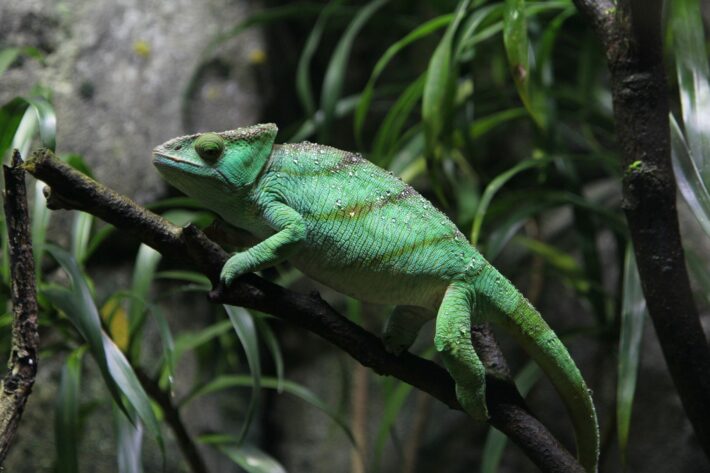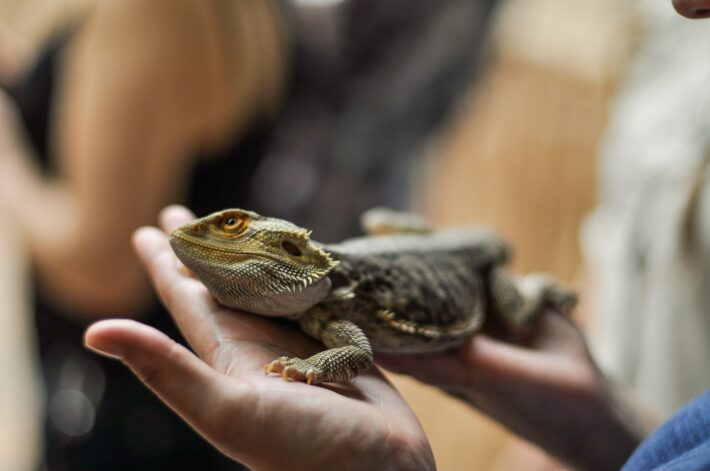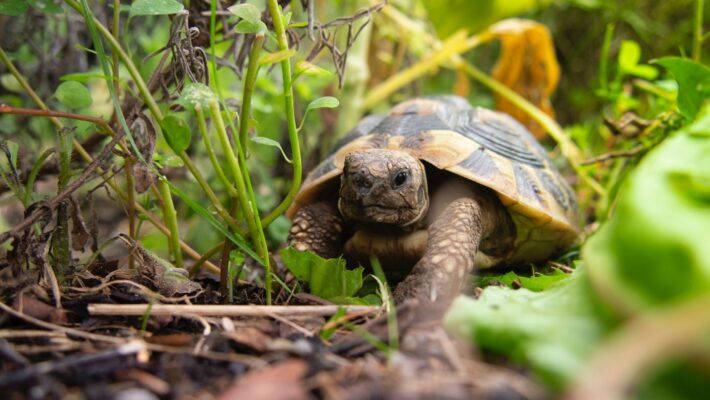If you’re considering bringing a reptile into your home as a pet, it’s crucial to understand the essential supplies and equipment required to ensure their well-being. From tanks and heating elements to proper lighting and substrates, providing a comfortable and stimulating environment for your scaly companion is paramount.
In this comprehensive guide, we’ll walk you through the must-have items necessary for keeping reptiles at home, covering everything from temperature regulation and habitat setup to feeding and hygiene. By equipping yourself with the right knowledge and tools, you’ll be ready to create a safe and thriving space for your reptilian friend.
What supplies do I need for keeping reptiles as pets?
When it comes to keeping reptiles as pets, several essential supplies are required for their proper care. You’ll need a suitable tank or enclosure that provides adequate space, along with a secure lid or screen to prevent escapes.
Additionally, heating elements such as heat lamps or heating pads are necessary to create a warm environment, while proper lighting, including UVB bulbs, ensures their overall health. Substrates like reptile carpets or bedding help maintain hygiene, and appropriate feeding supplies like feeding dishes or tweezers are essential.
Don’t forget about thermometers, hygrometers, and a reptile-specific first aid kit for monitoring health and handling emergencies.
What equipment is essential for maintaining a reptile habitat at home?

Maintaining a reptile habitat at home requires specific equipment to ensure your pet’s well-being. Along with the appropriate tank or enclosure, you’ll need heating equipment like heat lamps or under-tank heaters to regulate temperature. Lighting is crucial, and UVB bulbs simulate natural sunlight, supporting reptile health.
Thermometers and hygrometers help monitor temperature and humidity levels accurately. Suitable substrates, such as reptile carpets or newspapers, provide a comfortable and hygienic environment.
Cleaning supplies like terrarium cleaners and disinfectants are essential for regular maintenance. Additionally, having feeding dishes, water bowls, and a reptile-safe first aid kit handy is important for their overall care.
Which supplies are necessary for creating a comfortable environment for pet reptiles?
Creating a comfortable environment for pet reptiles requires specific supplies. Firstly, a spacious tank or enclosure with secure closures is necessary for their safety. Heating elements such as heat lamps or heating pads provide the appropriate temperature gradient, allowing reptiles to thermoregulate.
Proper lighting, including UVB bulbs, is essential for their physiological needs. Substrates like reptile carpet, sand, or bark provide a suitable surface for movement and can aid in maintaining humidity levels.
Water dishes for hydration, hiding spots for security, and climbing structures for enrichment are also important additions. Furthermore, having environmental enrichment items like branches, rocks, and plants can enhance their well-being.
What are the must-have items for setting up a reptile tank or enclosure?
When setting up a reptile tank or enclosure, several must-have items are essential for their proper care. Firstly, an appropriately sized tank or enclosure that suits the reptile’s needs is crucial.
Secure closures, such as a tight-fitting lid or screen, prevent escapes. Heating elements like heat lamps, heat emitters, or heating pads help maintain the desired temperature gradient within the habitat.
Adequate lighting, including UVB bulbs, supports reptile health. Substrates like reptile carpet, coconut husk, or bark provide a suitable flooring option. Additionally, temperature and humidity gauges, water dishes, hides, and climbing structures are necessary for their comfort and well-being.
What kind of heating elements are required for keeping reptiles in captivity?
To keep reptiles in captivity, various heating elements are required to ensure their thermoregulation needs are met. Heat lamps, which emit both light and heat, are commonly used to create a warm basking spot.
Under-tank heaters, also known as heat mats or heat pads, provide bottom heat for reptiles that require belly heat for digestion. Ceramic heat emitters are another option, emitting infrared heat without light.
Radiant heat panels offer a large heat source for bigger enclosures. Choosing the appropriate heating element depends on the reptile species, enclosure size, and temperature requirements, so it’s crucial to research and provide the correct heating setup for your specific reptile.
Which lighting options are recommended for reptile habitats?
Proper lighting is crucial for reptile habitats, and certain options are recommended to meet their specific needs. UVB lighting is essential for reptiles as it enables the synthesis of vitamin D3, necessary for calcium metabolism.
Compact fluorescent bulbs or linear fluorescent tubes are commonly used for UVB lighting. Full-spectrum bulbs provide a broader light spectrum, mimicking natural sunlight and aiding reptile well-being. It’s crucial to select the appropriate UVB bulb strength based on the reptile species and the distance the light must penetrate.
Consulting with a reptile veterinarian or specialist can help determine the suitable lighting options for your specific reptile.
What types of substrates should be used in reptile enclosures?
Choosing suitable substrates for reptile enclosures depends on various factors, including the reptile species and specific requirements. Options like reptile carpets or paper towels are commonly used for easy cleaning and maintenance.
Coconut husk or cypress mulch provides a naturalistic and moisture-retentive substrate for tropical species. Calcium sand or reptile-safe desert sands can be used for arid reptiles, but caution must be taken to prevent ingestion.
Reptile-safe bark or forest floor bedding can be utilized for certain species as well. It’s important to research the specific needs of your reptile to ensure the chosen substrate promotes its natural behaviors and habitat preferences.
What feeding supplies and equipment are necessary for reptile care?
Feeding supplies and equipment play a vital role in reptile care. Depending on the reptile’s dietary requirements, you may need feeding dishes, which can be as simple as shallow bowls or specialized dishes for insects or live prey.
Tweezers or forceps are useful for handling live prey or offering delicate food items. Gut-loading supplements may be required to provide additional nutrients to feeder insects. For reptiles that consume vertebrate prey, appropriate containers or tongs for safe feeding are necessary.
It’s crucial to ensure all feeding supplies are clean and sanitized to prevent bacterial contamination and maintain reptile health.
This table provides information on various feeding supplies and equipment that are essential for reptile care.
| Feeding Supplies | Equipment | Description |
|---|---|---|
| Feeding Dish | Tweezers | A shallow dish where you can place the reptile’s food, allowing easy access for feeding. |
| Feeding Tongs | Gut-Loading Supplements | Long-handled tongs or forceps provide a safe way to handle live prey for reptiles that consume insects or other small animals. |
| Calcium Powder | Feeder Insect Container | A powdered calcium supplement that helps ensure reptiles receive adequate calcium for bone health and proper development. |
| Water Bowl | Feeder Insect Gut-Loading Container | A dish or container that holds clean, fresh water for hydration. Ensure it is accessible and easily cleaned. |
| Feeder Insect Dusting Container | – | A container with a lid is used to coat feeder insects with powdered supplements before feeding them to reptiles, ensuring they receive the necessary nutrients. |
Are there any specific humidity control tools needed for reptile habitats?
Reptile habitats may require specific humidity control tools, particularly for species that thrive in environments with higher humidity levels. One common tool is a hygrometer, which measures the humidity percentage in the enclosure.
To increase humidity, misting systems or reptile foggers can be used to provide a fine mist or fog, replicating natural conditions. Humidifiers, both cool-mist and warm-mist types, can also help maintain optimal humidity levels.
Conversely, if the humidity is too high, dehumidifiers or well-ventilated enclosures may be necessary. The choice of humidity control tools depends on the reptile species and their specific humidity requirements.
What safety measures should be taken when keeping reptiles at home?

When keeping reptiles at home, it’s essential to prioritize safety measures to ensure both their well-being and the safety of household members. Firstly, secure enclosures with tight-fitting lids or screens prevent reptiles from escaping and potential accidents.
Regularly inspect the enclosure for any sharp edges or potential hazards that could harm your pet. Keep toxic plants, chemicals, and other harmful substances out of reach. Ensure that electrical cords and heat sources are safely installed and away from the reptile’s enclosure.
Regularly wash hands before and after handling reptiles to prevent the spread of bacteria. Following these safety measures promotes a safe and healthy environment for everyone involved.
Are there any specialized supplies needed for handling and interacting with reptiles?
Handling and interacting with reptiles may require specialized supplies to ensure both your safety and the well-being of the reptile. Depending on the reptile’s size and temperament, reptile handling gloves or snake hooks can be used for secure handling and reducing stress.
For small reptiles, gentle handling tools like small brushes or soft, clean clothes can be helpful. It’s important to approach and handle reptiles calmly and avoid sudden movements that may startle them.
Providing a safe and controlled environment for handling, such as a separate enclosure or secure area, is also recommended to minimize any risks or potential escape situations.
What are the essential cleaning and hygiene supplies for reptile enclosures?
Maintaining clean and hygienic reptile enclosures is crucial for their health. Essential cleaning and hygiene supplies include reptile-safe terrarium cleaners or disinfectants to clean the enclosure surfaces effectively.
A reptile-safe substrate scoop or sifter helps remove waste and debris from the substrate. Non-toxic cleaning brushes or scrubbers can be used for hard-to-reach areas or tough stains. It’s important to have separate cleaning tools designated for reptile enclosure use only to prevent cross-contamination.
Regularly washing and disinfecting water dishes and feeding dishes is also necessary. Maintaining a routine cleaning schedule ensures a clean and safe environment for your reptile.
Are there any specific tools or equipment required for reptile health monitoring?
Monitoring the health of your reptile requires specific tools and equipment to assess vital parameters. A reliable thermometer is crucial for measuring the temperature gradient in the enclosure accurately.
A hygrometer helps monitor humidity levels, ensuring they align with the reptile’s requirements. Depending on the species, a reptile-safe scale can be used to monitor weight changes, which can indicate overall health.
A magnifying glass or small flashlight aids in examining the reptile’s skin, scales, and other physical attributes. Keeping a detailed record or journal of observations and measurements can assist in tracking your reptile’s health and identifying any potential issues.
What supplies should I have on hand in case of emergencies for my pet reptile?
Being prepared for emergencies is important when caring for a pet reptile. It’s advisable to have a reptile-specific first aid kit that includes items like a sterile saline solution, antiseptic ointment, gauze pads, and bandages for addressing minor injuries.
Reptile-safe heat packs or heat pads can be useful in maintaining warmth during transportation or power outages. An emergency contact list, including a reptile veterinarian or exotic animal specialist, should be readily available.
It’s also helpful to have a transport carrier or container on hand for safe transportation during emergencies. Being proactive and having the necessary supplies can make a significant difference in critical situations.
Are there any recommended accessories or enrichment items for reptile habitats?

Reptile habitats can be enriched with various accessories to promote natural behaviors and mental stimulation. Climbing structures, such as branches or logs, provide opportunities for reptiles to explore and exercise.
Hiding spots, such as caves or reptile hides, offer security and a sense of privacy. Naturalistic decor items like artificial plants, rocks, or caves create a visually appealing environment. For aquatic reptiles, floating platforms or basking docks can be added to mimic their natural habitat.
Enrichment items like puzzle feeders or foraging toys encourage mental stimulation during feeding. It’s important to research the specific needs of your reptile species to select appropriate accessories that enhance their well-being.
Overall
Understanding the essential supplies and equipment needed for keeping reptiles at home is crucial for providing optimal care and ensuring the well-being of these unique pets. From tanks and heating elements to lighting, substrates, and feeding supplies, each component plays a vital role in creating a comfortable and stimulating environment for reptiles.
By investing in the right tools and following proper husbandry practices, reptile owners can maintain appropriate temperature and humidity levels, promote natural behaviors, and support their pets’ overall health. Remember to consult reputable sources, reptile specialists, or veterinarians for specific species requirements to ensure a successful and rewarding reptile-keeping experience.




